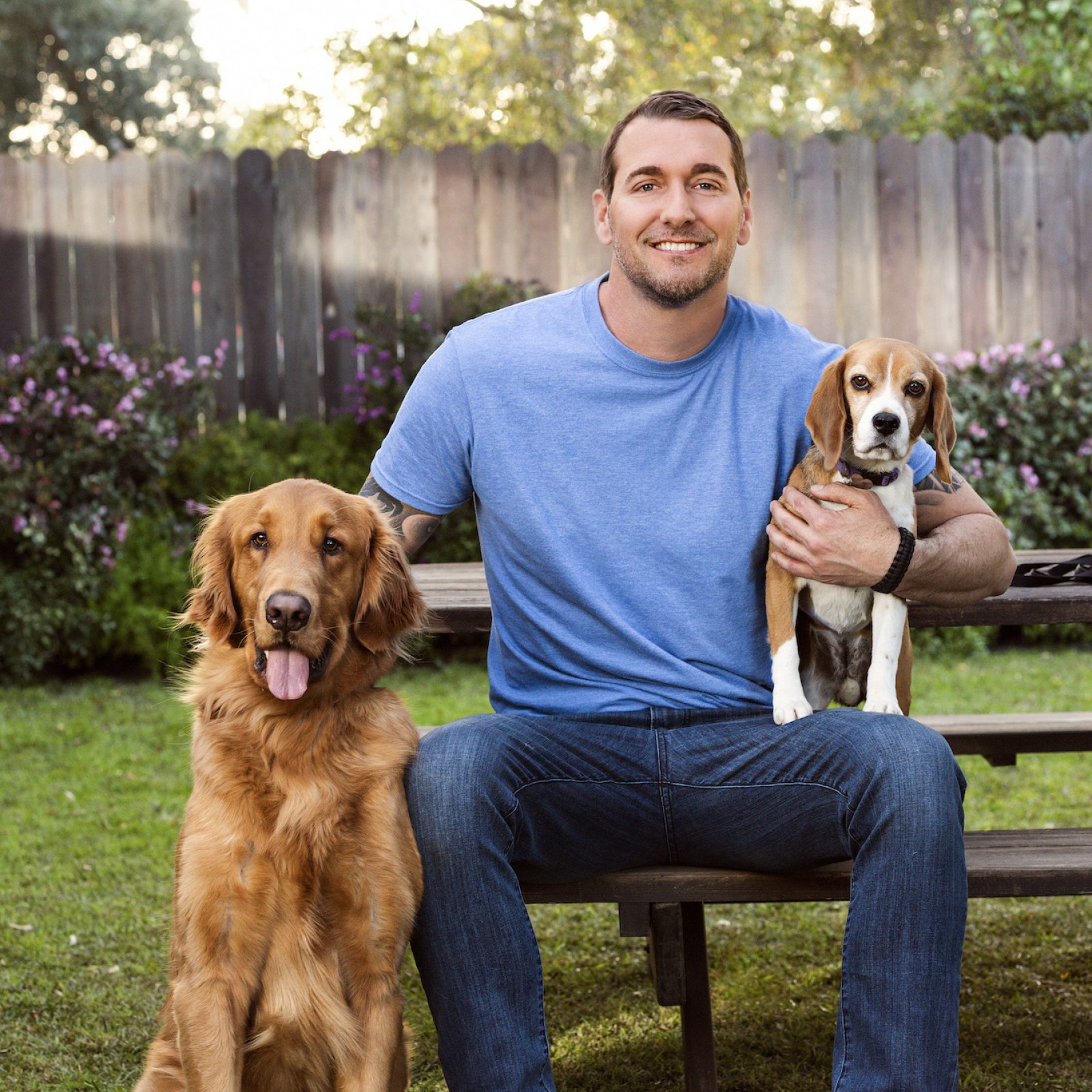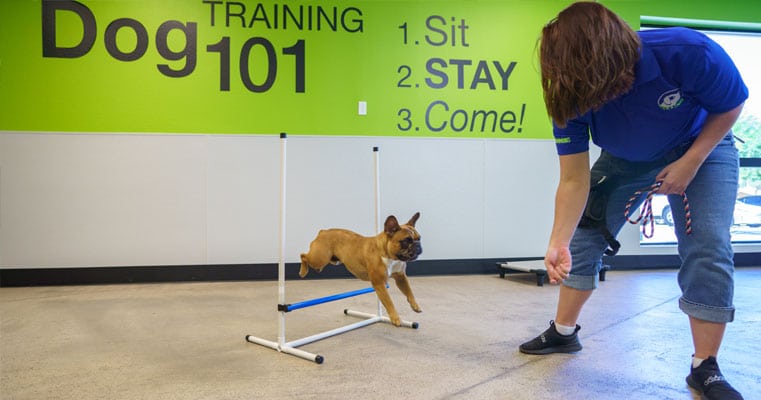Positive Reinforcement in Dog Training: A Humane Approach to Success
Positive Reinforcement in Dog Training: A Humane Approach to Success
Blog Article
Leading Canine Educating Methods Every Proprietor Must Know

Positive Support Strategies
Utilizing favorable reinforcement methods is crucial for effective dog training, as it fosters a trusting bond between the instructor and the pet. This method focuses on gratifying desirable behaviors instead of penalizing unfavorable ones, creating an environment for learning. Incentives can consist of treats, appreciation, or playtime, which motivate pets to duplicate the behaviors that gain them these benefits.

Additionally, this approach improves the pet's enthusiasm for training sessions. They are more engaged and receptive when pets associate training with positive experiences. Dog training. Beyond prompt therapy, positive reinforcement motivates a joint relationship between the canine and fitness instructor, lowering anxiety and concern
To take full advantage of performance, it is crucial to provide benefits immediately, making certain the dog attaches the habits with the reinforcement. Fundamentally, positive reinforcement methods not just generate better-trained canines however also promote a harmonious partnership in between dog and proprietor.
Remote Control Training Approach
The remote control training technique is a very reliable technique that builds on the principles of positive reinforcement by adding a distinct sound to mark desired behaviors. This method utilizes a small handheld device that produces a clicking audio, permitting trainers to communicate with their dogs in a clear and immediate manner. When a dog performs a behavior that the proprietor desires to urge, the remote control is triggered, complied with by a benefit, normally in the type of treats or praise.
The key to successful remote control training depends on consistency and timing. It is important to click at the exact moment the desired actions takes place, making certain that the pet dog associates the sound with the action and the succeeding benefit. This method not just boosts interaction but also fosters a more powerful bond in between the owner and the dog, as it encourages engagement and communication throughout training sessions.
Remote control training can be related to a range of commands and actions, from basic obedience to more intricate techniques. Its versatility and performance make it a preferred technique amongst professional instructors and family pet owners alike, leading the way for a trained and responsive canine buddy.
Leash Training Fundamentals
Effective chain training is vital for ensuring a risk-free and pleasurable strolling experience for both dogs and their owners. Dog training. Chain training should begin very early and be approached with persistence and uniformity. Begin by choosing an appropriate chain and collar or harness. A flat collar may function for some dogs, while others may profit from a harness that lowers pulling.
Introduce your canine to the leash progressively, permitting them to explore it in a comfy setting. This includes gratifying your pet dog for strolling beside you instead than pulling in advance.
If your pet begins to pull, quit walking right away. Wait up until they return to your side prior to resuming. This instructs them that pulling does not result in proceed. Furthermore, technique various walking environments to help your dog adapt to interruptions.
Routine practice will solidify your dog's understanding of chain rules. Bear in mind that chain training is an ongoing procedure; patience and consistency will certainly generate the most effective outcomes, promoting a favorable experience for both you and your canine buddy.
Socialization Approaches
Socializing is a vital aspect of pet dog training that must ideally start throughout puppyhood yet can be beneficial at any age. Efficient socialization aids dogs develop confidence and reduces the possibility of behavioral issues. To implement effective socialization methods, reveal your canine to a range of environments, individuals, and other pets.
Start with controlled settings, such as puppy classes or arranged playgroups, where young pet dogs can connect securely. Slowly present your pet to new experiences, including different sounds, surfaces, and activities. Make sure these encounters useful link are positive and fulfilling to establish a sense of safety and security.
For grown-up pets or those lacking exposure, begin with low-stress situations. Short, favorable communications with pleasant humans and tranquil dogs can produce positive associations. Utilize treats and praise to enhance preferable habits throughout these experiences.

Uniformity and Persistence
Acknowledging the relevance of consistency and persistence in dog training is necessary for attaining long-term outcomes. Training a pet is a gradual process that needs a structured technique and unwavering dedication from the proprietor. Each command or behavior should be enhanced regularly to help the canine comprehend what is anticipated of them. Irregular training can lead to complication, making it challenging for the pet dog to comprehend actions or commands, inevitably preventing progression.
Additionally, perseverance is a crucial part of reliable training. Pets, like people, learn at their very own rate. Some may realize concepts quickly, while others might take much longer. It is crucial for proprietors to remain encouraging and tranquil, reinforcing favorable behavior without turning to stress or punishment. This cultivates a trusting relationship between the canine and proprietor, motivating a more enthusiastic and willing student.
To cultivate consistency and patience, develop a routine training regular, make use of the exact same commands, and ensure that all member of the family apply the same training concepts - Dog training. By doing so, you create a stable atmosphere helpful to learning, enabling your pet to thrive and establish right into a mannerly friend
Final Thought
Finally, reliable pet dog training methods, such as favorable support, remote control training, and correct leash training, are important for fostering a healthy owner-dog partnership. Additionally, browse around these guys implementing socialization strategies and keeping uniformity and persistence throughout the training process contributes significantly to a dog's overall wellness. By integrating these techniques, pet owners can facilitate the growth of well-adjusted, loyal pet dogs, ultimately improving the top quality of life for both the owner and the pet.
Amongst the most famous methods are positive reinforcement, clicker training, and leash training, each offering special advantages that add to a well-behaved pet dog. As we explore these basic strategies, it comes to be noticeable that mastering official site their nuances can considerably influence the training experience and the dog's total behavior.Using favorable reinforcement methods is essential for effective pet dog training, as it fosters a relying on bond between the pet dog and the instructor.In verdict, reliable dog training strategies, such as positive reinforcement, remote control training, and appropriate chain training, are crucial for cultivating a healthy and balanced owner-dog connection. By incorporating these approaches, dog owners can assist in the advancement of well-adjusted, loyal pets, inevitably improving the high quality of life for both the canine and the proprietor.
Report this page